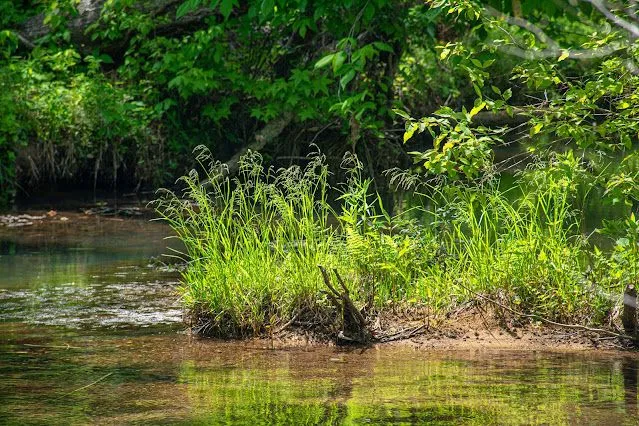In today’s world, where environmental degradation poses a significant threat to the planet, organizations like Westervelt Restoration play a crucial role in preserving and restoring natural ecosystems. Westervelt Restoration Tou embodies a comprehensive approach to habitat conservation, ecological restoration, and biodiversity enhancement. With a focus on sustainable practices, the organization has been a beacon of hope for environmental sustainability, particularly in the United States.
This article delves into the history, mission, and key projects of Westervelt Restoration, highlighting its pivotal role in mitigating ecological damage and promoting sustainability.
Understanding Westervelt Restoration Tou
Westervelt Restoration is a division of The Westervelt Company, a leading name in forestry and environmental stewardship with over 130 years of experience. Known for their expertise in ecological restoration, Westervelt Restoration Tou focuses on restoring wetlands, streams, forests, and other natural habitats. The company’s operations emphasize balancing human development with ecological preservation, ensuring sustainable outcomes for generations to come.
The History and Evolution of Westervelt Restoration Tou
1. The Origins of Westervelt Restoration Tou
Westervelt Restoration Tou traces its roots to The Westervelt Company, established in 1884. Initially focused on timber and forest management, the company expanded its vision to include environmental restoration, recognizing the increasing need for sustainable development.
2. Transition to Ecological Restoration
In the late 20th century, the environmental movement spurred companies to adopt eco-friendly practices. Westervelt embraced this change, launching Westervelt Restoration Tou to focus specifically on restoring degraded ecosystems and promoting biodiversity.
3. Modern-Day Operations
Today, Westervelt Restoration Tou operates across the southeastern United States, leveraging advanced technologies and innovative methodologies to achieve its goals. Their projects range from wetland and stream restoration to mitigation banking and carbon sequestration.
Key Focus Areas of Westervelt Restoration Tou
Westervelt Restoration Tou addresses critical environmental challenges through targeted initiatives. Here are the main areas they specialize in:
1. Wetland Restoration
Wetlands are vital ecosystems that support water purification, flood mitigation, and diverse species. Westervelt Restoration Tou excels in wetland restoration by:
- Rehabilitating degraded wetlands
- Creating new wetland habitats
- Managing wetlands to ensure long-term sustainability
2. Stream Restoration
Healthy streams are essential for aquatic life and water quality. Westervelt Restoration Tou employs natural channel design techniques to:
- Restore stream functionality
- Stabilize stream banks
- Enhance aquatic and riparian habitats
3. Forest Management and Reforestation
Forest areas are critical in carbon storage and the support of species habitat. Westervelt Restoration Tou specializes in attempts at afforestation on sidelined environments such as the planting of native species including the longleaf pine tree.
Also Read: Empowering Communities
4. Species Conservation
One of the organization’s notable contributions is its work in species conservation. By restoring habitats, they help endangered and threatened species thrive, such as:
- The red-cockaded woodpecker
- The gopher tortoise
- Various aquatic and plant species
5. Carbon Sequestration and Climate Mitigation
Westervelt Restoration Tou contributes to global climate goals by implementing projects that sequester carbon. These initiatives include forest restoration and land management practices designed to capture atmospheric carbon dioxide.
The Importance of Mitigation Banking
A significant aspect of Westervelt Restoration Tou’s operations is mitigation banking, a market-driven approach to habitat restoration. Here’s how it works:
- What is Mitigation Banking?
Mitigation banking involves restoring or preserving natural habitats to offset environmental impacts caused by development elsewhere. Credits from these banks are sold to developers needing to meet regulatory requirements. - Westervelt’s Role in Mitigation Banking
Westervelt Restoration Tou operates several mitigation banks, focusing on wetlands and streams. These projects ensure “no net loss” of critical habitats while enabling responsible development. - Success Stories
Through mitigation banking, Westervelt Restoration Tou has successfully preserved thousands of acres of wetlands and streams, supporting regional biodiversity and enhancing water quality.
Innovative Practices in Ecological Restoration

Westervelt Restoration Tou stands out for its use of cutting-edge techniques and methodologies in environmental restoration. These practices include:
1. Data-Driven Decision Making
The organization uses advanced tools like Geographic Information Systems (GIS) and environmental modeling to plan and monitor restoration projects.
2. Natural Channel Design
For stream restoration, Westervelt employs natural channel design principles, which mimic natural processes to stabilize and restore waterways.
3. Collaborative Approach
Westervelt Restoration Tou collaborates with government agencies, private landowners, and conservation organizations to maximize the impact of their projects.
4. Long-Term Monitoring
Ensuring sustainability requires continuous monitoring. Westervelt Restoration Tou conducts regular assessments to track the progress and health of restored ecosystems.
Notable Projects by Westervelt Restoration Tou
The company has been involved in numerous successful projects that showcase its commitment to environmental restoration. Here are a few examples:
1. Coastal Wetland Rehabilitation
Westervelt Restoration Tou has undertaken projects along coastal regions to restore wetlands affected by human activity and climate change. These efforts help mitigate flooding and support marine biodiversity.
2. Longleaf Pine Ecosystem Restoration
The longleaf pine ecosystem, once a dominant feature in the southeastern U.S., has been significantly reduced due to deforestation. Westervelt’s reforestation projects aim to revive this ecosystem, benefiting species like the indigo bunting and eastern diamondback rattlesnake.
3. Stream Mitigation Projects
The organization’s stream mitigation banks have restored miles of waterways, improving water quality and providing habitats for aquatic species.
4. Carbon Sequestration Projects
By implementing sustainable forestry practices, Westervelt Restoration Tou has contributed to significant carbon sequestration, helping combat climate change.
The Role of Westervelt Restoration Tou in Biodiversity Conservation
Biodiversity is essential for maintaining healthy ecosystems. Westervelt Restoration Tou plays a vital role in promoting biodiversity through its projects. Here’s how:
1. Habitat Creation
By restoring degraded lands, the organization creates new habitats for various species, allowing them to flourish.
2. Protection of Endangered Species
Westervelt focuses on preserving habitats critical to the survival of endangered species, ensuring their long-term viability.
3. Pollinator Support
Through forest and wetland restoration, the organization creates environments conducive to pollinators like bees and butterflies, which are crucial for ecological balance.
Educational and Community Engagement Initiatives
Westervelt Restoration Tou recognizes the importance of community involvement in achieving sustainable outcomes. Their educational and outreach programs include:
1. Workshops and Training
The organization conducts workshops to educate landowners and stakeholders about the importance of ecological restoration and sustainable practices.
2. Volunteer Opportunities
Westervelt offers opportunities for community members to participate in restoration activities, such as tree planting and habitat monitoring.
3. Collaborative Research
Partnering with academic institutions, Westervelt Restoration Tou supports research on ecological restoration techniques and biodiversity conservation.
Challenges and Opportunities
1. Challenges
- Climate Change: Unpredictable weather patterns pose risks to restoration projects.
- Funding: Securing adequate funding for large-scale restoration remains a challenge.
- Invasive Species: Controlling invasive plants and animals is essential for the success of restoration efforts.
2. Opportunities
- Technological Advancements: Innovations in ecological engineering and data analysis enhance restoration effectiveness.
- Policy Support: Government initiatives promoting sustainability provide opportunities for expansion.
- Public Awareness: Growing awareness of environmental issues increases support for restoration projects.
The Future of Westervelt Restoration Tou
Looking ahead, Westervelt Restoration Tou aims to expand its operations, leveraging technology and partnerships to address emerging environmental challenges. Their focus will remain on restoring ecosystems, promoting biodiversity, and contributing to climate resilience.
1. Expanding Mitigation Banking
The organization plans to establish more mitigation banks, ensuring greater availability of credits for responsible development.
2. Climate Adaptation Projects
Future projects will likely focus on adapting ecosystems to withstand the impacts of climate change, such as rising sea levels and extreme weather events.
3. Global Impact
While currently focused on the United States, Westervelt Restoration Tou has the potential to extend its expertise to international restoration efforts.
Conclusion
Westervelt Restoration Tou represents a model of how businesses can contribute to environmental sustainability. Through innovative practices, targeted restoration projects, and community engagement, the organization has significantly impacted ecological conservation. By focusing on wetlands, streams, forests, and species conservation, Westervelt Restoration Tou addresses some of the most pressing environmental challenges of our time.
Their work underscores the importance of balancing human development with ecological preservation, ensuring a sustainable future for generations to come. As they continue to expand and innovate, Westervelt Restoration Tou sets a benchmark for environmental restoration, proving that sustainable solutions are not just necessary but achievable.



